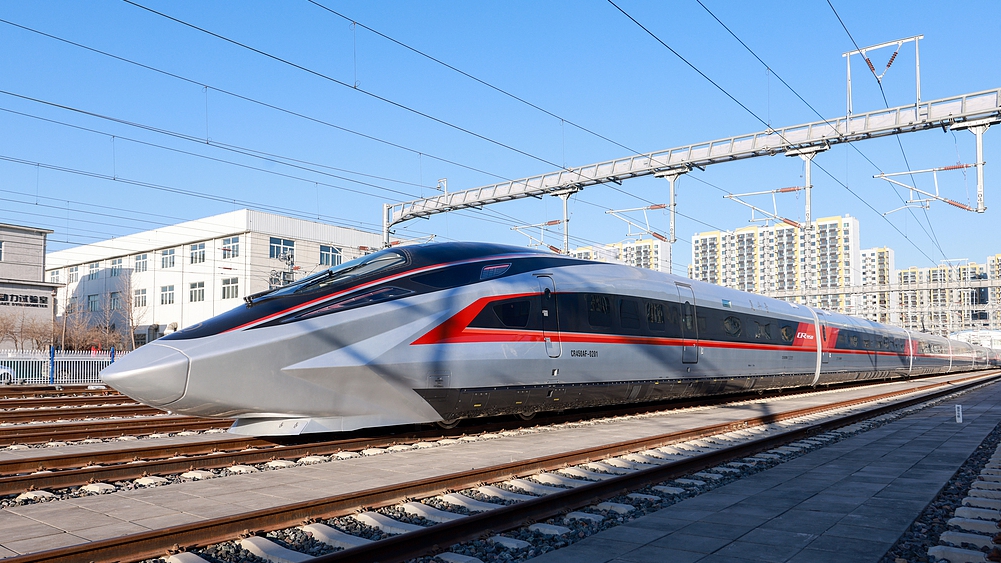
China’s new high-speed train model, the CR450, is currently undergoing extensive tests and evaluations on its prototypes, paving the way for the commercial operation of this new bullet train.
Known as the world’s fastest high-speed train, the CR450 can run at 450 kilometers per hour in tests and operation, according to China State Railway Group Co., Ltd (China Railway).
Engineers at the test center have been carefully overseeing the “weight control” of the CR450 prototypes. To achieve this, they have installed sensors on the tracks, which transmit real-time weight data for each of the eight wheels on both sides of every carriage to a computer system. This allows for precise monitoring and adjustments to ensure optimal performance.
“While reducing the weight, we must ensure that its strength does not decrease, and we even need to increase its strength because of the higher speed. It’s just like a person who wants to slim down while building strength. This involves structural changes and material innovations,” said Chen Can, an associate researcher at the Locomotive and Vehicle Research Institute China Academy of Railway Sciences (CARS) Corporation Limited.
To reduce air resistance during high-speed operation, researchers overcame challenges, such as resonance and heat dissipation, and for the first time, enclosed the entire bogie area underneath the train.
“Ensuring the smoothness of the entire train body minimizes resistance during operation,” Ha Dalei, a senior designer at the National Engineering Research Center of Rail Transportation of China Railway Rolling Stock Corporation (CRRC) Changchun Railway Vehicles Co., Ltd.
The CR450 prototype has completed static and low-speed dynamic tests in traction, braking, and noise. The next step will be gradual speed increases during dynamic running tests.
China is currently the only country in the world to have achieved commercial high-speed rail operation at 350 kilometers per hour. Now, China has increased the speed by an additional 50 kilometers per hour.
According to Zhang Bo, director of the Locomotive and Vehicle Research Institute at CARS since 2018, the team has spent years validating the technical feasibility, determining reasonable top-level technical standards, and setting the technical route. While a 50-kilometer-per-hour speed increase may seem small, overcoming the associated difficulties is significant. On one hand, the goal is to achieve higher speed and safer operations. On the other hand, a lot of effort has been put into reducing drag and energy consumption, cutting vibrations and noise, and enhancing automation and lightweight design.
These efforts have made the train body smoother, improved its aerodynamics, and significantly reduced resistance. The CR450 employs technological measures that reduce drag by up to 22 percent.
Zhang noted that the speed of high-speed trains is not just a technical issue but also an economic one, and it is necessary to consider its environmental impact. However, speed remains the most representative indicator of high-speed rail performance.
